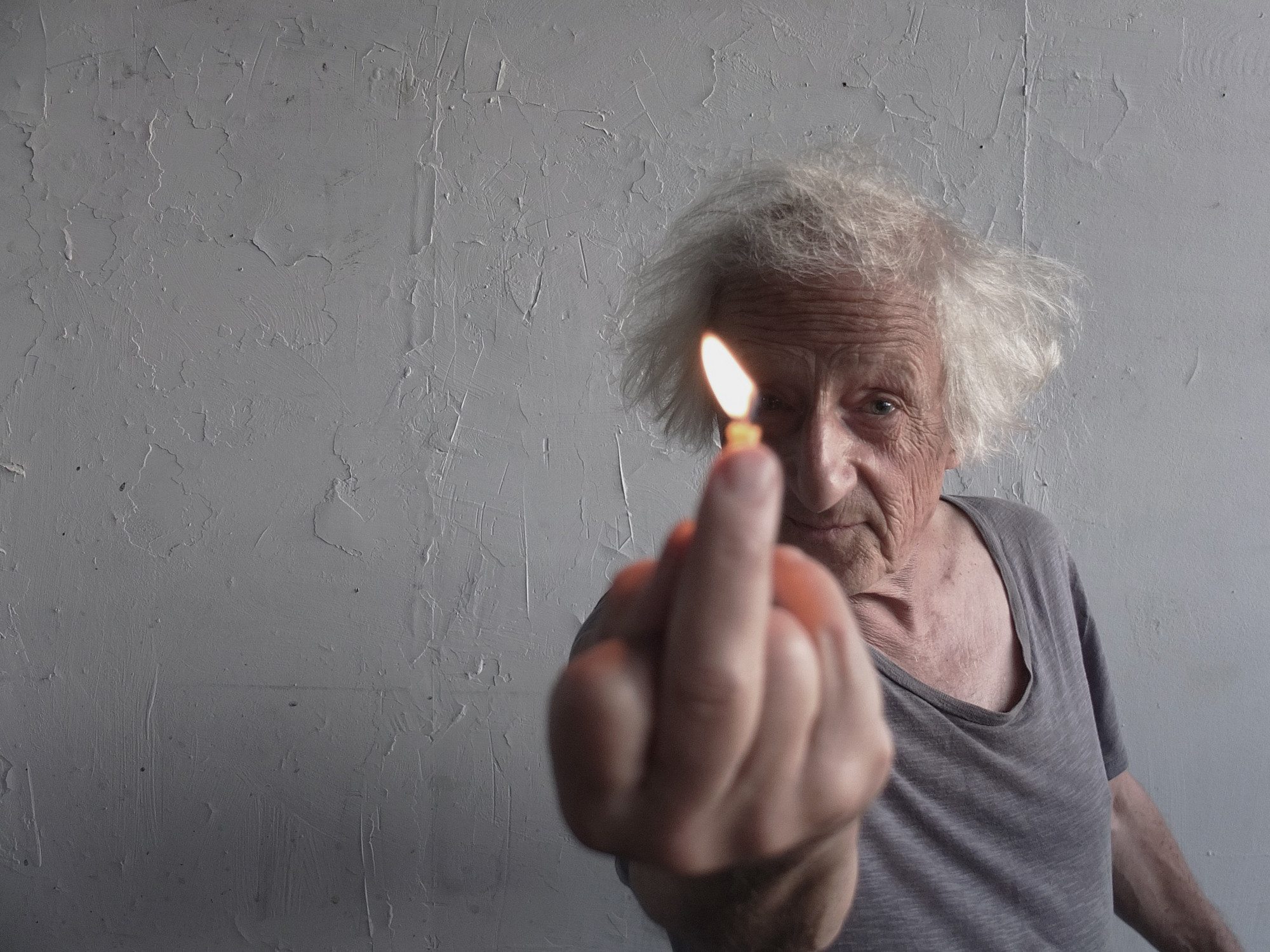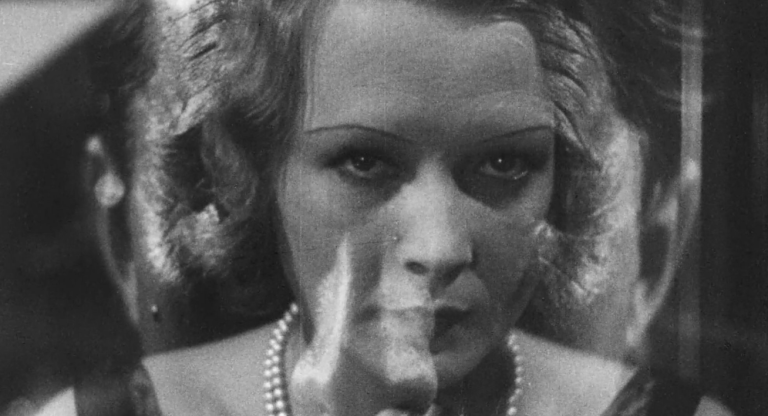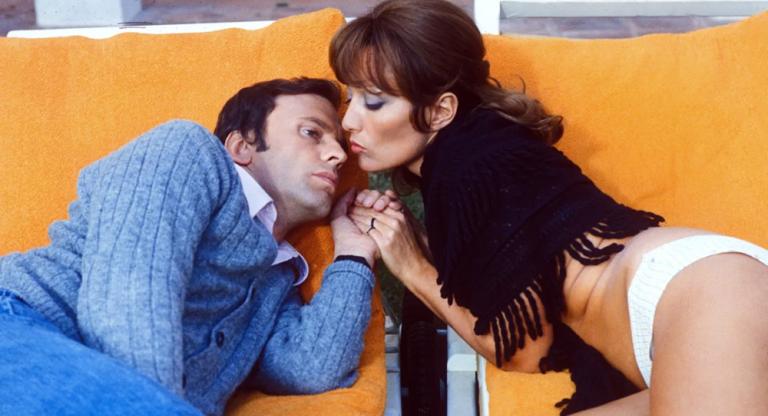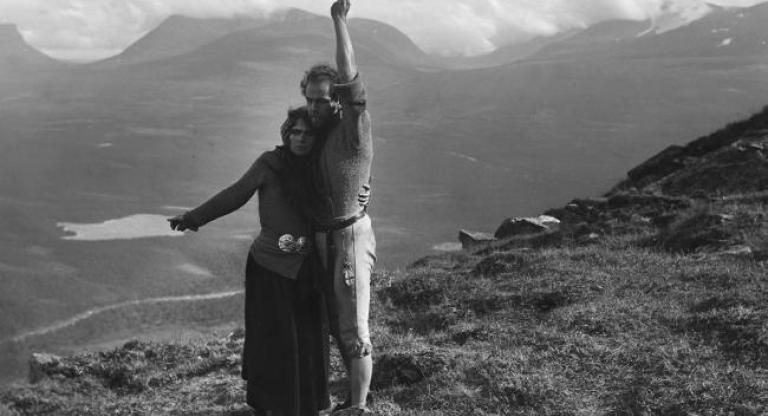We Had the Day Bonsoir (2022) is a beautiful invitation. "On a eu la journée bonsoir" was a phrase the late Michel Haas had often said; On a eu la journée bonsoir (We Had the Day Bonsoir) is the film by Narimane Mari, his partner in love and life. Little is dictated in We Had the Day Bonsoir, which opts for a discontinuous form that flits and winks, stitched together through filmed footage, audio recordings, and voiceovers. We Had the Day Bonsoir says something precious about joy: namely, the joy of creation, whether it be sculpture or a life together.
The question seems to be how at all one even begins to speak of the person they love. Mari has choices; she chooses to think expansively. We first meet Haas not through his face or voice, but an opening credits scene that spills over a tracking shot of water, soon blanketed by the shadows of the dusk. These aren't only credits to a film, we learn, but credits to a life—or perhaps Mari hopes for this film and their life to be somewhat of the same. Those credited include Haas, Mari, and some of Mari's regular film collaborators like Nasser Madjkane, but also the poet Nazim Hikmet, composer Maurice Jaubert, filmmaker Djibril Diop Mambéty, Sun Ra, Nat King Cole, Mallarmé, even "les visages de la rue" (the faces of the street), "le chien'' (the dog), and "la pieuvre" (the octopus). We Had the Day Bonsoir immediately inhabits an air of whimsicality, insouciant against the fact of loss. Mari eschews the constraints of temporality, existing neither exclusively in the life of Haas or post-mortem, as if to say that death is not a definitive close, but a mere groove in the travails of life. We Had the Day Bonsoir finds its strength in audio recordings from when Haas was alive, often set to presently filmed footage. It is after the credits that we meet Haas first in body and then in voice, set over a long take of his sculpture on the wall. He speaks through a voicemail he had left for Mari. "Ça va, chérie; I wondered where you were and what you're doing," Haas says. "It wasn't to interrupt you, but just to tell you I'm far away, but I'm here." Mari answers in the present, through a voiceover: "I'm here too, my love."
Maybe we assume that grief is centrally about sadness; Mari believes otherwise. We Had the Day Bonsoir takes grief to be something beyond the simplicities of "happy" and "sad," final or definitive. Grief extends; like the octopus that humorously inserts itself into the middle of the film, its tendrils reach from the past to the present. Grief is continuous, even generative, even rich—something to create from, in the same way that Haas and Mari created films, sculptures, paintings, and love with and from each other during their life together. There are moments that feel harrowing to watch and listen to, like when we learn of the extent of the pain Haas suffered in his final days, but the greatest moments are of the habitual. Those are the everyday moments of Haas and Mari talking and walking and laughing together to Charlie Chaplin's The Champion. I love Mari's long, thoughtful close-ups of Haas, which make me think that there must be no greater expression of love than the camera. In one close-up, Mari films Haas walking on the streets of Marseille. You can see everything of his face: his wrinkles, his eyes, his smile, all the evidence of a life lived. Mari walks backwards, holding the camera, as he walks forwards. "Careful behind you, Narimane," he says, and she replies, "Yes, I see, chéri."
We Had the Day Bonsoir screens this afternoon, September 24, and on September 30 at the Museum of Modern Art as part of their Narimane Mari retrospective. Today’s screening will be followed by a discussion with the filmmaker.



